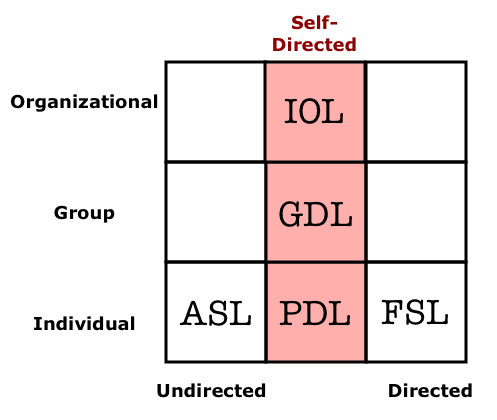On Tuesday 9th Aug I visited Open University to listen to the inaugural lecture of Prof Agnes Kukulska-Hulme – The Mobile Mind: learning differently with mobile devices. More and more I am getting a better picture of what it means to learning in the digital age. The lecture left me reflecting even more learning in the connected, networked, digital age and helped advanced my thinking of how I am visualising collaborative learning or knowledge-building. The lecture also left me reflecting on a session that transpired on the previous evening.
Monday evening sparked the opening of the Caribbean Educators Online Conference (COEC). Prof. Curtis Bonk presented an appraisal of the ‘flat world’ of learning. To my thinking, the keynote challenged our assumptions about learning and put forward the notion of learning as something that is collaborative, multifaceted and self-directed. The challenge to rethink our held assumptions of learning leads to the need to make sense of learning in the ‘flat’ digital age.
To begin, I think unpacking the notion of collaboration and collaborative learning is worth some deliberation. While collaboration is often deemed as working together for common purpose it is often confused with the notion of cooperation. The subtle difference between the collaboration and cooperation is nuanced in the way collaboration is perceived by some practitioners – “I give, you take; you ask, I share.” Collaboration has deeper meaning and application and I have written on this previously. However, does collaboration have different meanings and applications between disciplines? It is appears easy to contrive an answer that addresses this question and I am left thinking even deeper into that regard following Camille’s mention of Geert Hofstede during the session. But what exactly is that culture of collaboration that is worth exploring? Perhaps we could start exploring what is proposed by Geert Hoofstede Hoofstede and Evan Rosen. I used Rosen (2007) in arguing for a case for collaboration in my research but Hofstede’s (1984) perspective on culture’s consequences provides fodder for crafting a stronger argument for a culture of collaboration in education and online learning. Thereby advancing an understanding of a culture of collaboration that help make sense of effective learning designs in the ‘flat’ digital and ‘muddy’ terrain of learning in this digital connected world.
What I present in the ensuing section seeks to make a claim for aspects of this culture of collaboration within education. While the argument is not set in stone it presents a standing point for navigating through rushing mesh of data that flows through the internet.
It seems more and more there is a blurring in the formal and informal learning divide and this helps to shape the argument for understanding the culture of collaboration in education further. While most of us are wedded to the notion of informal and formal learning, Jane Hart (website) provides an insightful deconstruction that factors intentionality, context and agency aspects of learning:
1. IOL – Intra-Organisational Learning- how social media tools can be used to keep employees up to date and up to speed on strategic and other internal initiatives.
2. FSL – Formal Structured Learning – how educators (teachers, trainers, learning designers) as well as students can use social media in education and training – for courses, classes, workshops etc.
3. GDL – Group Directed Learning – how groups of individuals-teams, projects, study groups etc – can use social media to work and learn together (a “group” can be just two people, so coaching and mentoring fall into this category),
4. PDL – Personal Directed Learning – how individuals can use social media for their own (self-directed) personal or professional learning
5. ASL – Accidental & Serendipitous Learning – how individuals, by using social media, can learn without consciously realising it (aka incidental or random learning).
(Hart 2009)
Taking Hart’s conceptualisation further Jarche (2009), proposed an interpretation of self-directed learning which juxtaposes intentionality in both the individual group and organisational contexts in which attention is given to self-directed learning in the matrix where the personal-directed, group-directed and intra-organisational learning are seen as requiring a lot of self-directed learning. Jarche’s matrix (see below) provides a design representation this conceptualization.

source:http://www.jarche.com/wp-content/uploads/2009/11/Screen-shot-2009-11-14-at-11.26.05-AM.png
These deconstructions of the informal and formal learning divide leads us to rethink design for learning in the online setting. Thus designing for learning or designing for collaborative knowledge-building, is more than just a focus on content it requires a deeper understanding of what it means to collaborate. What is presented here proposes understanding self-directed aspect of collaboration in online settings that beckons us to rethink our designs in a context that is marred by complexity.
References:
Hart, J., 2009. Social Media FOR learning – Part 2 – Social Media for Working & Learning. Social Media FOR learning – Part 2. Available at: http://janeknight.typepad.com/socialmedia/2009/11/social-media-for-learning-part-2.html [Accessed August 10, 2011].
Hofstede, G.H., 1984. Culture’s consequences: International differences in work-related values, Sage Publications, Inc.
Jarche, H., 2009. Social media and self-directed learning. Social media and self-directed learning. Available at: http://www.jarche.com/2009/11/social-media-and-self-directed-learning/ [Accessed July 4, 2010].
Kukulska-Hulme, A., 2011. Inaugural lecture – The Mobile Mind: learning differently with mobile devices – Berrill Stadium. Available at: http://stadium.open.ac.uk/stadia/preview.php?s=1&whichevent=1735 [Accessed August 10, 2011].
Rosen, E., 2007. The Culture of Collaboration 1st ed., USA: Red Ape Publishing.


Recent Comments